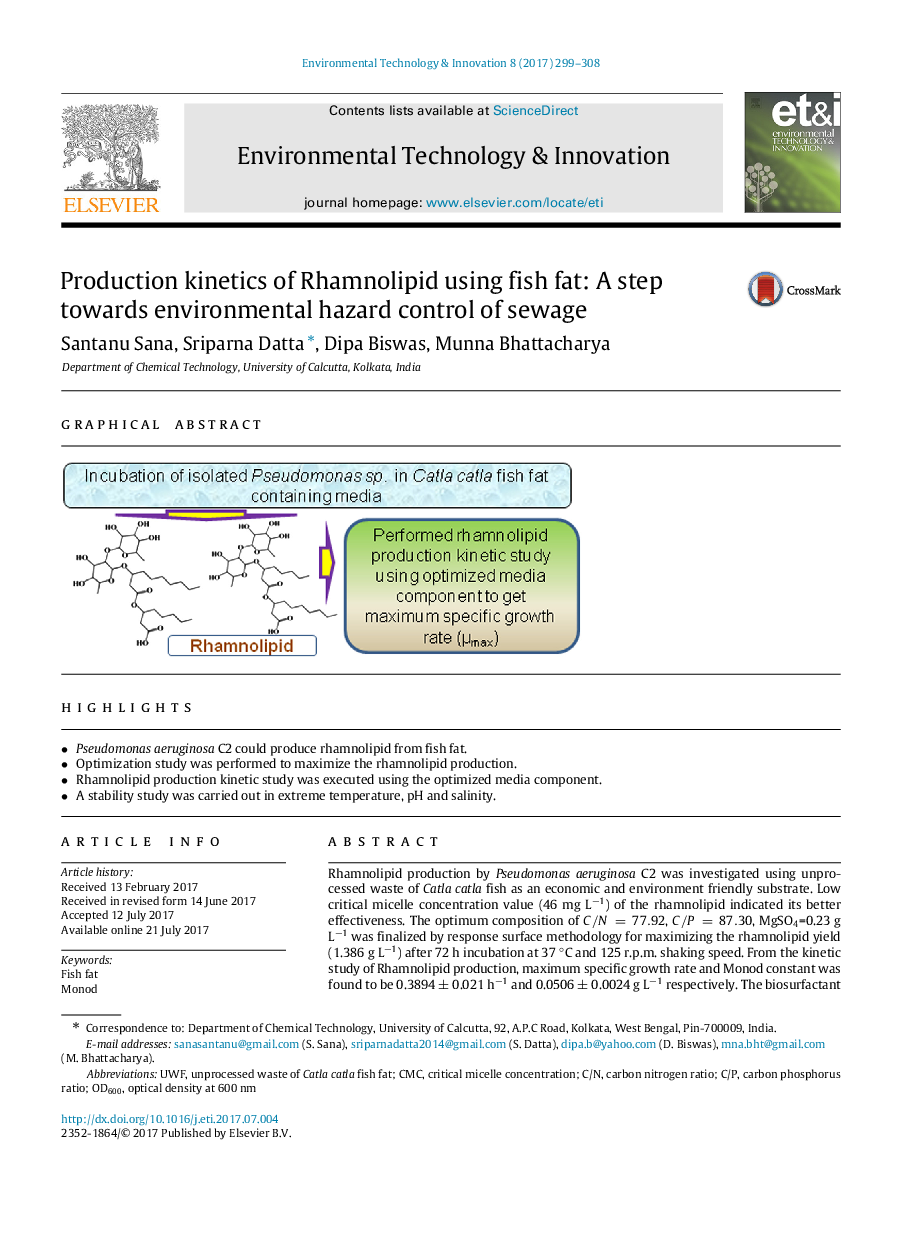| Article ID | Journal | Published Year | Pages | File Type |
|---|---|---|---|---|
| 5749612 | Environmental Technology & Innovation | 2017 | 10 Pages |
â¢Pseudomonas aeruginosa C2 could produce rhamnolipid from fish fat.â¢Optimization study was performed to maximize the rhamnolipid production.â¢Rhamnolipid production kinetic study was executed using the optimized media component.â¢A stability study was carried out in extreme temperature, pH and salinity.
Rhamnolipid production by Pseudomonas aeruginosa C2 was investigated using unprocessed waste of Catla catla fish as an economic and environment friendly substrate. Low critical micelle concentration value (46 mg Lâ1) of the rhamnolipid indicated its better effectiveness. The optimum composition of CâN=77.92, CâP=87.30, MgSO4=0.23 g Lâ1 was finalized by response surface methodology for maximizing the rhamnolipid yield (1.386 g Lâ1) after 72 h incubation at 37 °C and 125 r.p.m. shaking speed. From the kinetic study of Rhamnolipid production, maximum specific growth rate and Monod constant was found to be 0.3894 ± 0.021 hâ1 and 0.0506 ± 0.0024 g Lâ1 respectively. The biosurfactant was effective within a wide range of pH (2-8), salinity (2-8 g %) and temperature (100 °C for 60 min and autoclaving) that supported its potential application to various industries. Final characterization of the isolated rhamnolipid was performed by  1H NMR and mass spectrometric analysis.
Graphical abstract Download high-res image (344KB)Download full-size image
